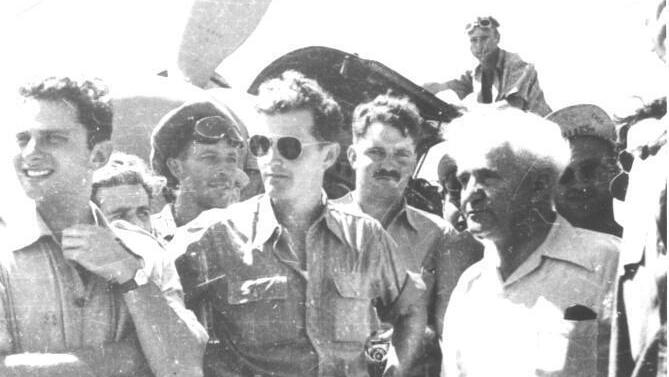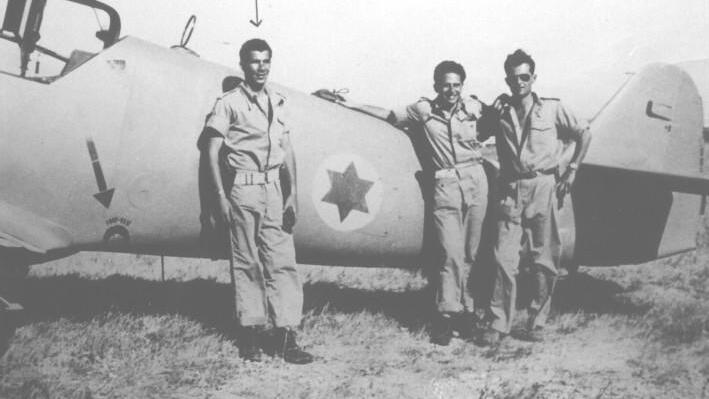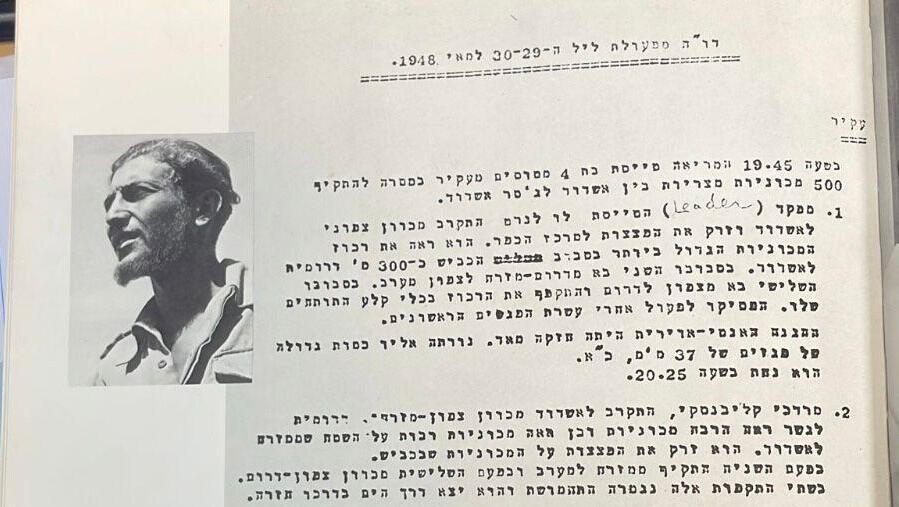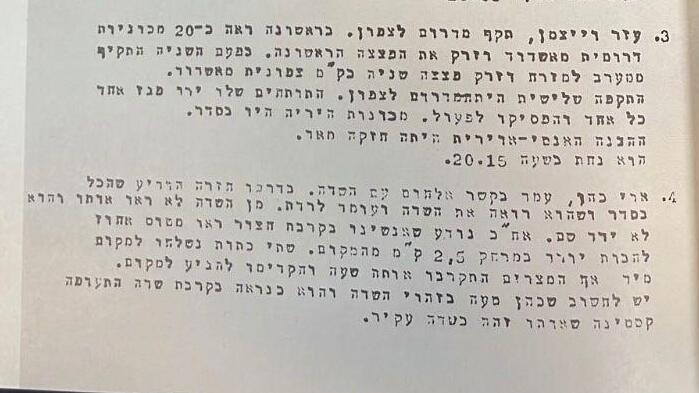This was a secret operation aimed at preserving the element of surprise: The Messerschmitt fighter planes were brought to Israel from Czechoslovakia in a secret operation a few days before May 29, 1948, when they embarked on their first operational flight, which was also the Israeli Air Force's first strike.
More stories:
There were four pilots on the four planes from 101 Squadron, the first fighter squadron of the IDF that was formed during the battles of the War of Independence: Modi Alon, who was appointed as the squadron commander on the same day, Captain Lou Lenart, who co-founded the squadron with Alon and led the attack, Major Ezer Weizman, who later became the seventh president of Israel, and Lieutenant Eddie Cohen.
The mission was to strafe a convoy of over 1,000 Egyptian vehicles heading toward Tel Aviv. The fighter planes flew over Ashdod in the area known as Jaser Asdod, where the Egyptian convoy was located, and dropped bombs that successfully halted its advancement.
The Egyptian soldiers and their commanders were surprised by the aerial attack and even more so by the fact that Israel possessed fighter planes.
Only three pilots returned from the mission, as Lieutenant Eddie Cohen was hit during the flight and his plane crashed. The attack report from those days described how Mordechai Kalibansky (Modi Alon) observed "many vehicles south of the bridge. He dropped the bomb on the vehicles on the road. On the second time, he attacked from east to west. In both of these attacks, the ammunition ran out, and he flew back over the sea on his return journey." It was also noted that the left brake did not work, and therefore, the wing suffered a minor hit.
"Lou Lenart approached from the north and saw a large concentration of vehicles," the report stated. "A large number of rounds were fired at him. The anti-aircraft defense was very strong. He attacked with ten rounds in three bursts, and then his guns ceased to function."
As for Weizman's aircraft, it was noted that "his guns fired one round each and stopped working. He attacked three times, with the first attack hitting over 20 vehicles."
As for Cohen's case, it was written, "On his return journey, he reported that everything was in order and that he could see the field and was about to descend. Our people in Hatzor saw a burning aircraft descending at a distance of 2.5 km from the location. Two squads were immediately sent to the site, but the Egyptians arrived before us. It is believed that Cohen made an error in identifying the field."
Despite the daring and successful attack, the damage the Egyptians took was relatively negligible, and the Givati and Negev Brigades were deployed to complete the mission and make them retreat. This operation was not successful, and the Egyptians withdrew completely only after Operation Yoav five months later.
101 Squadron, the first combat squadron, recorded numerous successes and received the Chief of General Staff's Citation twice. About a month after the orchestrated attack, Alon successfully shot down two Egyptian Dakota planes that bombed Tel Aviv, and the city's residents cheered at the sight of the extraordinary Israeli fighter plane. In October of that year, Alon was killed when he returned from an attack near Ashdod, and his plane crashed near the Herzliya Airport.
Squadron commander in the Yom Kippur War, Lt. Col. Avraham (Avi) Lanir, fell in Syrian captivity and was killed. Several years after his death, he was awarded the Medal of Courage.
Two years ago, the squadron returned to its original base at Ramat David after 65 years of service in Hatzor, and it Is currently commanded by Lt. Col. A, who emphasizes that "the squadron's history is very present, and it is important for us to connect all the people who serve the heritage."
"Today marks 75 years since the first aerial assault by the IDF in a series of events that began with a ceremony in memory of Lou Lenart in Los Angeles," said Lt. Col. A.
"Today, a ceremony will take place at Ad Halom Bridge, which is organized by the Israel Air Force Association, and as part of it, there will be a flyover above the bridge in honor of the pilots and the Machal (foreign legion) volunteers to whom Lenart and Cohen belonged - individuals whom Zionism burned within them and who were willing to give up everything to reach Israel and fight. The ceremony will also refer to the victory achieved through the combination of ground forces."
Lt. Col. A added that the first attack was "a historic miracle. The planes that arrived only nine days before the attack, how they arrived and were assembled, and the big secret of their existence. This is a special squadron with a rich history. I have conversations with new soldiers and tell them about the first attack event. Since then, the planes and the people have changed, but the goal remains the same: to defend the country and its citizens."





